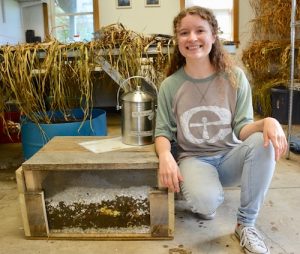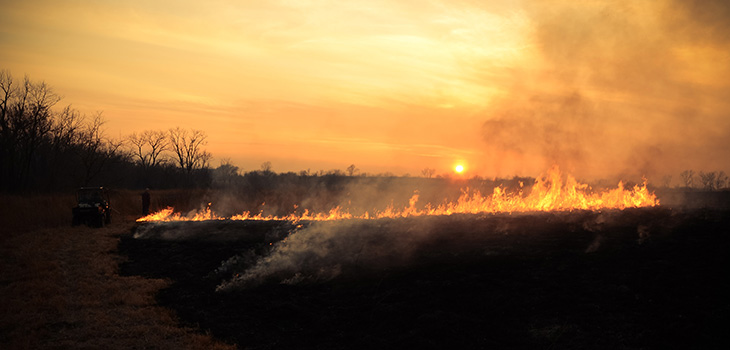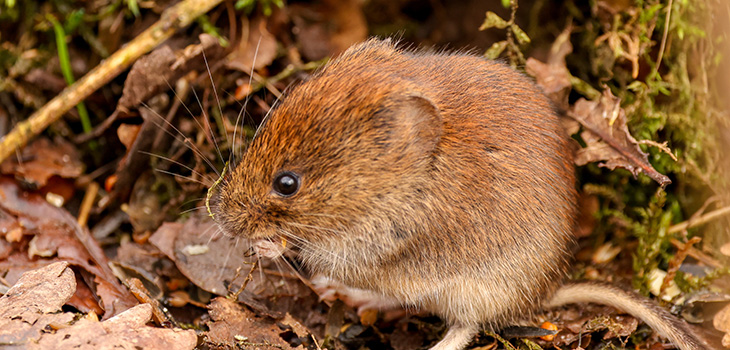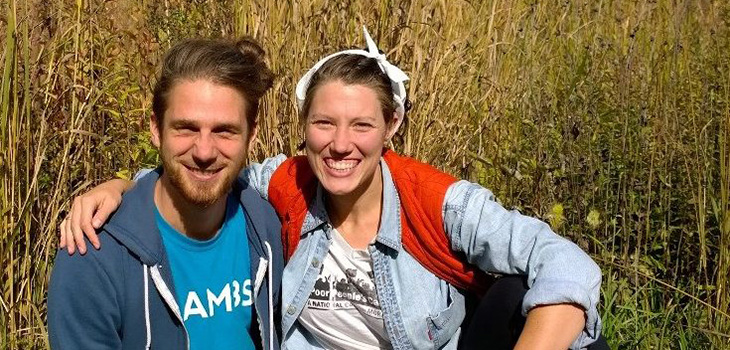 What’s a molecular biology and biochemistry major doing in Merry Lea’s Agroecology Summer Intensive (ASI)? Cailin Smith, a rising junior from Knightstown, Ind., says she joined the group because a lot of biochemical research is agricultural.
What’s a molecular biology and biochemistry major doing in Merry Lea’s Agroecology Summer Intensive (ASI)? Cailin Smith, a rising junior from Knightstown, Ind., says she joined the group because a lot of biochemical research is agricultural.
“I know I want work that helps reverse the effects of climate change in the future, and with a biochem degree, there are lots of options,” Cailin explains. She felt the ASI might help sort them out. She also saw it as a valuable complement to her lab and textbook training.
Hands-on learning
Cailin wasn’t sure she would excel at hands-on learning. While her background gave her a good grasp of the carbon, nitrogen and phosphorus cycles that are important in agriculture, that wasn’t going to help her move a cow or milk a goat. She was nervous about working with animals. But by the end of the program, she found that even scooping poop out of a pen had its rewards.
“Both ways of learning are good. Both are equally exhausting. But when you’re outside learning by talking to people and doing things, it is more enriching and fun,” Cailin says.
One hands-on project that Cailin particularly enjoyed was taking responsibility for the education garden. Her role was to manage fertilizers. This involved figuring out what the plants were lacking and which fertilizers contained what they needed.
Working with worms
Cailin also became an enthusiastic advocate of a much smaller ecosystem: worm bins. After visiting a large-scale worm farm during a field trip, Cailin built an educational worm bin for the Merry Lea Sustainable Farm. Unlike most worm bins, hers had a glass window on one side. Visitors could see the layers in the bin and get a better understanding of how the decomposition process worked.
Those who came to Cailin’s presentation learned that red worms are the worm of choice because it is their habit to remain near the surface of the soil. A pound of worms per cubic foot can compost up to a half pound of food scraps per day, producing worm castings, which are an excellent fertilizer. Cailin also showed the group how to feed the worms and harvest worm castings.
One outcome of Cailin’s time at the Merry Lea Sustainable Farm was greater clarity about the kind of biochemical research she wants to pursue.
“We talked a lot about the effects of commodity farming and large-scale agriculture. This gives me insight into where I should put my energy in the future. I want to work somewhere where regenerative agriculture is the focus,” she concluded.



